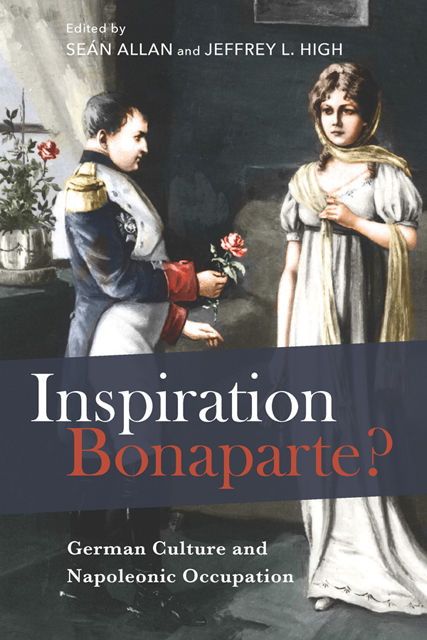14 - The Emperor’s Clothes: Napoleon as a Screen Icon
Published online by Cambridge University Press: 04 January 2024
Summary
What John Lennon once said of The Beatles—“We’re more popular than Jesus”—is indisputably true of Napoleon Bonaparte (1769–1821) as a film character. Since the first Napoleon film, the Lumière Brothers’ Napoleon Meets the Pope, flickered across a screen in 1897, the Corsican’s life and his deeds have featured in more than one thousand films, twice as many as have ever been made about the story of Christ and early Christianity. Three hundred of these contain screen roles for the Emperor himself, which makes him the most frequently portrayed historical figure in cinema history. The legions of filmmakers jostling for a place in Napoleonic film history include some of the world’s greatest: Gance, Ford, Curtis, Guitry, Borzage, Koster, Allen, Vidor, Reed … The list of filmmakers who hesitantly gave up their plans for Napoleon movies is shorter, but no less illustrious. Charlie Chaplin (1889–1977) contemplated a Napoleon film for nearly two decades, beginning with concepts for a biopic in 1922 with Edna Purviance as Josephine. He returned to the idea several times throughout the 1920s and 1930s. In 1926 he gave it up because Abel Gance announced his epic Napoléon; in 1934, he invited Alastair Cooke to collaborate on a Napoleon-on-St. Helena-project. Only in 1940, when Chaplin finally settled on a different Great Dictator, did he abandon his Napoleon plans for good (Tulard, 258).
Another notable filmmaker with a Napoleon fixation spanning decades was Stanley Kubrick (1928–99), who spent most of his career researching and planning a film he never made. Much like Chaplin, Kubrick only abandoned his plans because Dino de Laurentiis (1919–2010) beat him to the punch, with Waterloo (1970). By that time, however, Kubrick had spent colossal amounts of time and research on the project, read every single English-language book available on Bonaparte at the time, and amassed, and neatly catalogued, seventeen thousand images from the period between 1769 and 1830. Kubrick’s Napoleon became legendary without ever being made: “No other film of his ever cost as much time or money at the planning stage; no other film ever generated as much material as Napoleon.” Many, although by no means all of these materials, are assembled in Alison Castle’s monumental Stanley Kubrick’s “Napoleon”: The Greatest Movie Never Made.
- Type
- Chapter
- Information
- Inspiration Bonaparte?German Culture and Napoleonic Occupation, pp. 303 - 324Publisher: Boydell & BrewerPrint publication year: 2021



